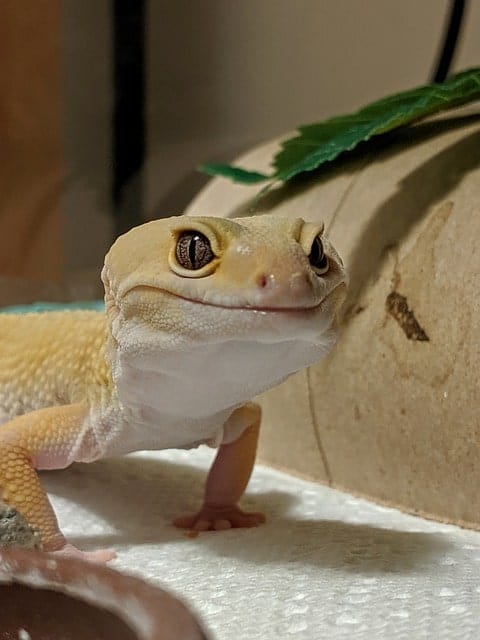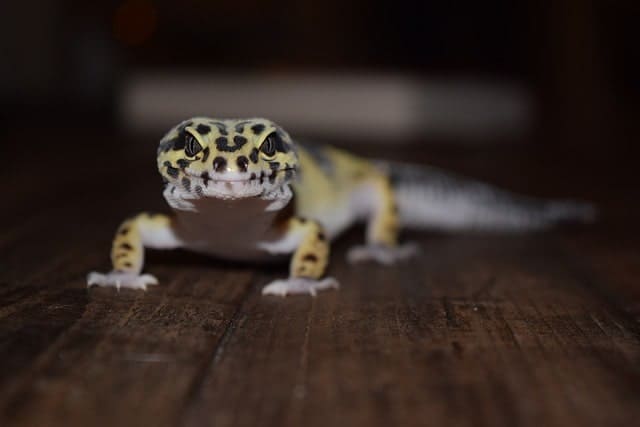Coconut fiber is secure and excellent as a terrarium base, due to its biological properties such as being non-toxic and breathable. Leopard geckos consume a small amount of substrate, such as wood shavings or coco coir, which is why some people believe coconut fiber could be dangerous to them.
However, coconut fiber is safe, non-toxic, breathable, and much tougher to ingest if utilized as carpet in the leopard gecko’s terrarium. Coconut fiber performs the necessary roles of a secure, hard substrate (so the gecko doesn’t eat it), doesn’t sink, and can’t dig when utilized as carpet for the leopard gecko terrarium. Additionally, coconut fiber helps maintain moisture in the enclosure, which keeps your leopard gecko healthy.

Use A Compact and Firm Coconut Fiber Mat as Substrate
Since leopard geckos are native to hot, dry environments, it is important for their terrariums to replicate this environment as closely as possible. To simulate the natural environment, a substrate made of coconut fiber is ideal.
Coconut fiber is a fibrous substance and is therefore perfect for creating a dense mat for leopard geckos. In addition, since a leopard gecko’s native habitat is dry and sandy, it’s only natural that the terrarium should attempt to mimic this.
The hardness of the coconut fiber basis means it will be comfortable even though it does not have a sandy texture. These mats are completely safe for leopard geckos to use as pet substrates.
During the day, leopard geckos in their natural habitat hide out in cracks, crevices, and under rocks where it is cool, damp, and dry. To create an atmosphere similar to that found there, a terrarium’s substrate should be made of coconut fiber.
This type of material not only allows moisture levels to remain high but also helps maintain a cool temperature in the enclosure.
Why Do Leopard Gecko Eat Substrate?
Leopard geckos are obligate carnivores, which mean that they require animal protein in order to survive. Unlike some other gecko species, leopard geckos do not naturally consume substrate in order to fulfill their mineral requirements.
Instead, leopard geckos become accustomed to consuming substrate due to a nutrient deficiency that can occur when an animal is kept in captivity.
If the leopard gecko is deprived of its regular food source, it will compulsively eat soil in an attempt to obtain the necessary minerals.
In addition to calcium, the leopard gecko will also require significant amounts of other essential minerals, such as magnesium and potassium.

Why Do Some People Raise Concerns Over Using Coconut Fiber As Substrate For Leopard Gecko?
Leopard geckos have been known to adapt well to their environment, which may be why some people feel that using coconut fiber as a substrate may make the gecko darker.
Since the natural color of coconut fiber substrate is dark brown, the leopard gecko’s color may darken with time. This is not dangerous, but some people find it unattractive.
Also, if the substrate is used in its natural form, it would be uncomfortable for the leopard gecko. A compact carpet of coconut fiber, which is easy to acquire on any pet store, is ideal.
Coconut fiber absorbs a lot of moisture, so adding a sheet of waterproof tin below makes it more durable and moisture-resistant.
Conclusion
Coconut fiber is a great choice for a substrate for leopard geckos. It’s a secure, hard substrate that doesn’t sink and can’t be digested easily if ingested. It also helps maintain moisture in the enclosure, making it an ideal choice in high humidity and low temperature environments like winter.